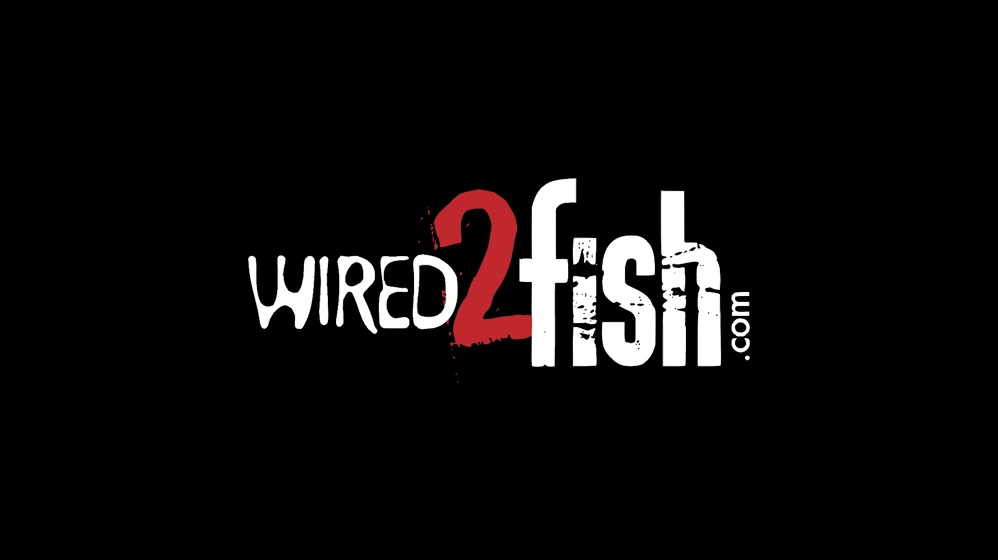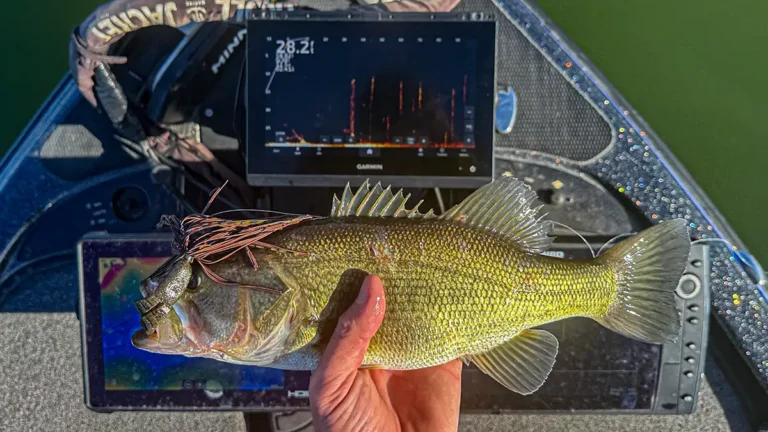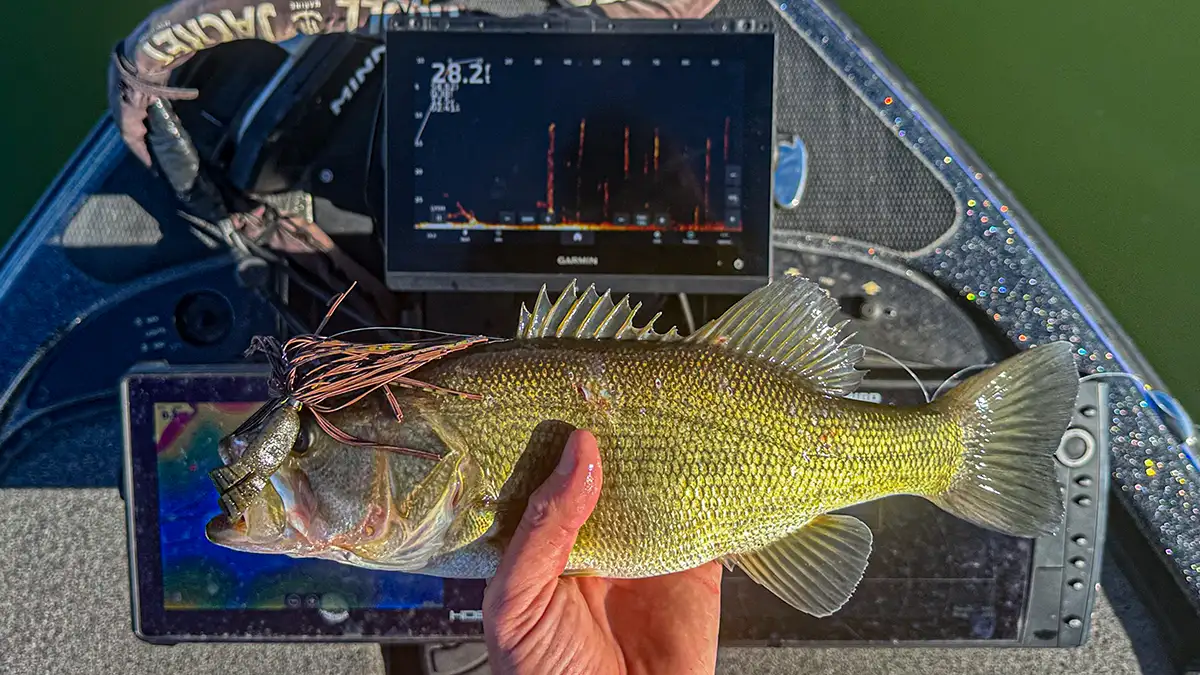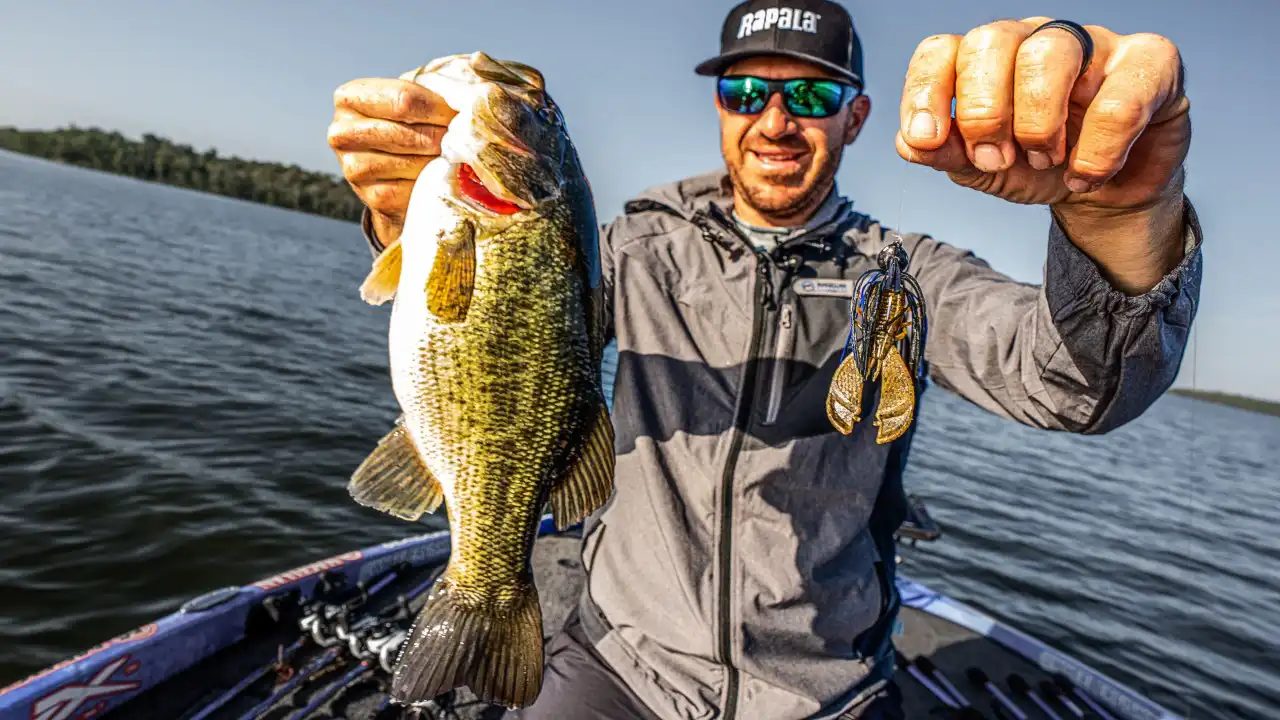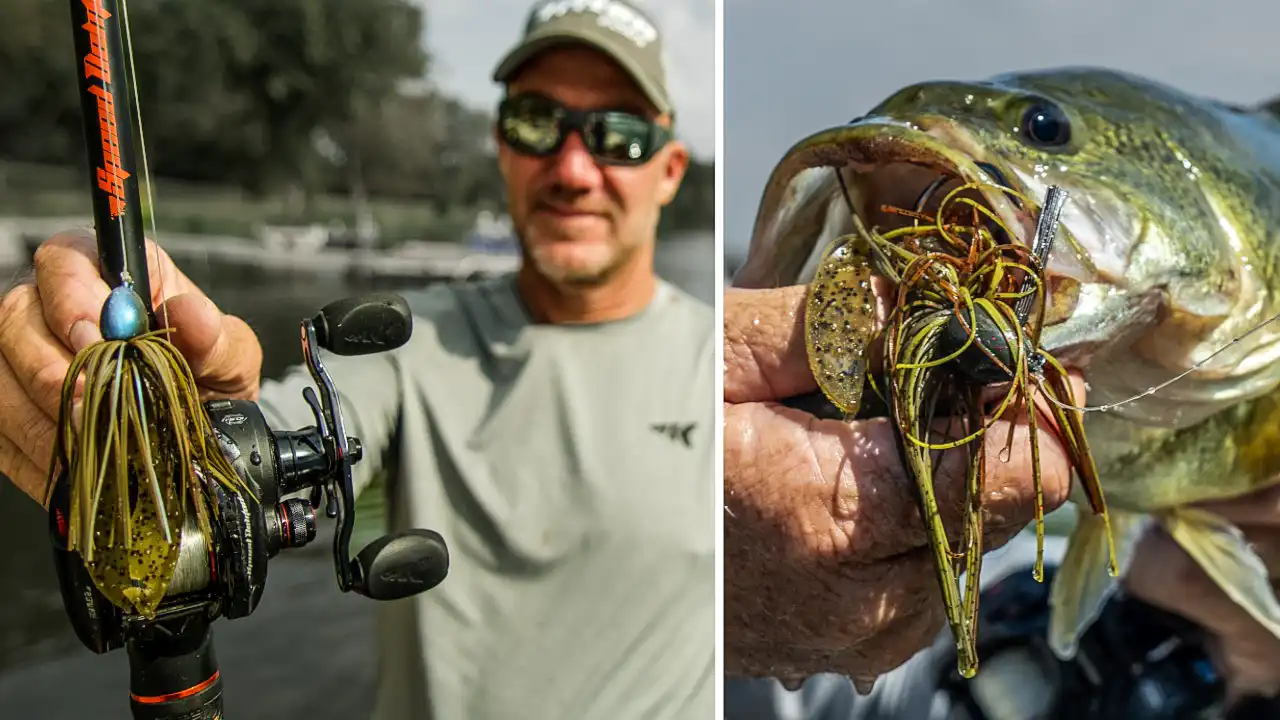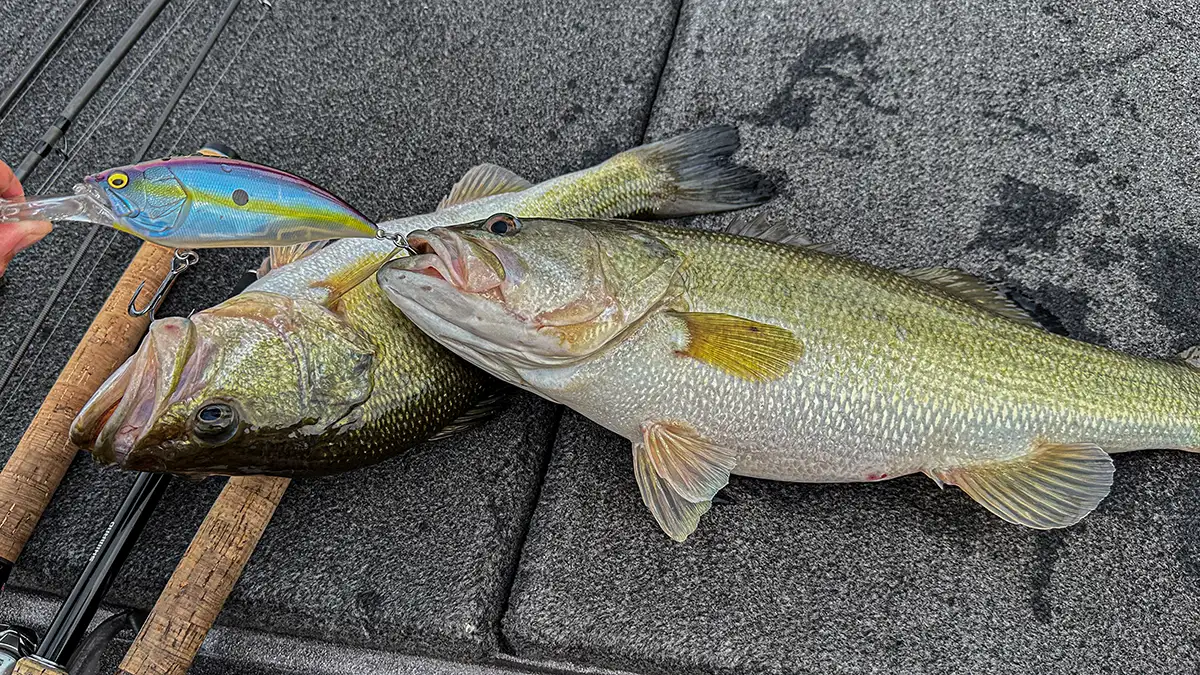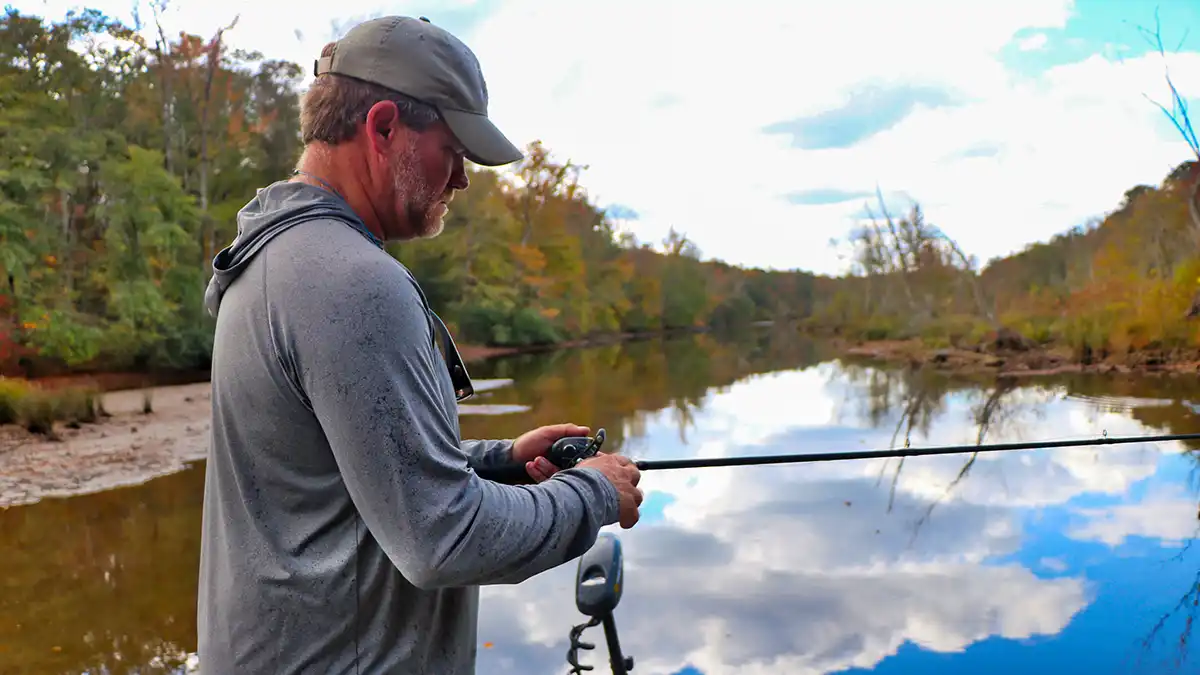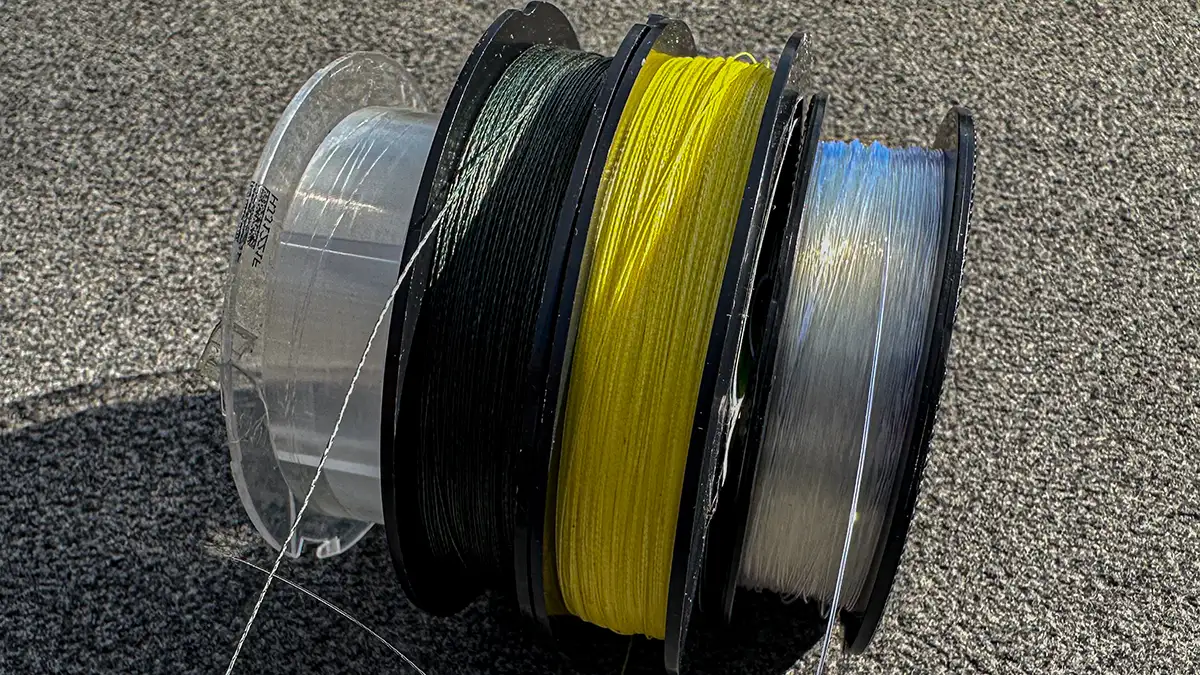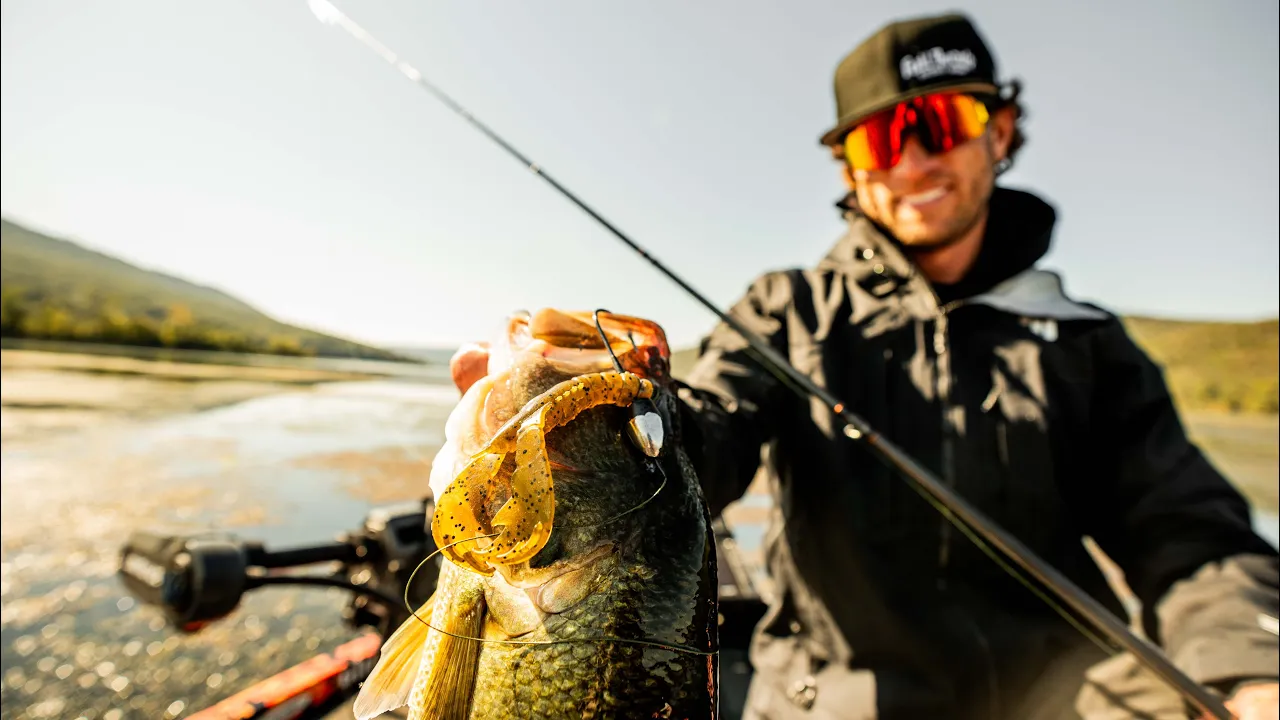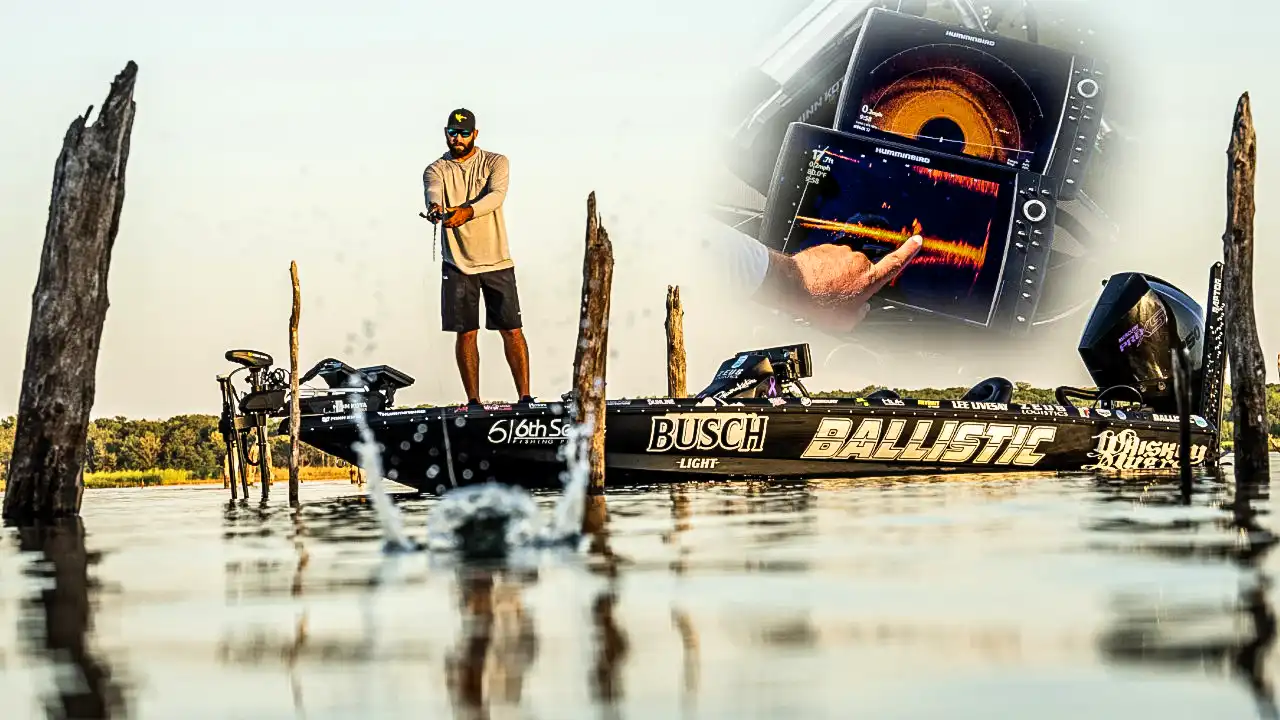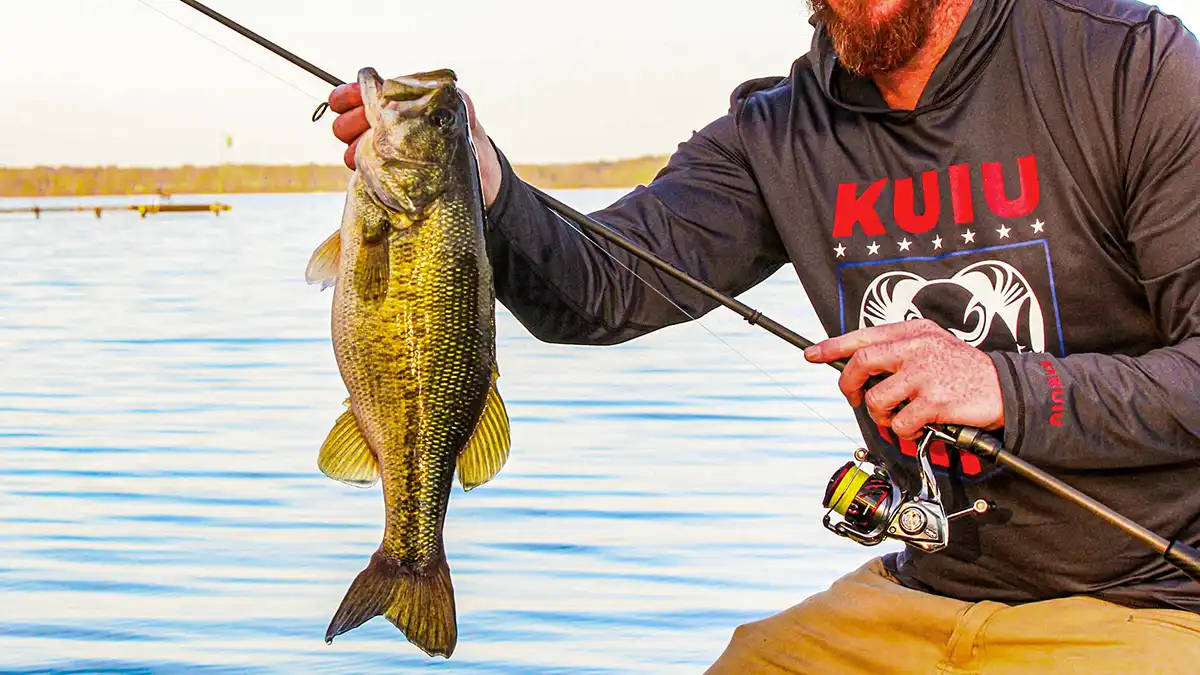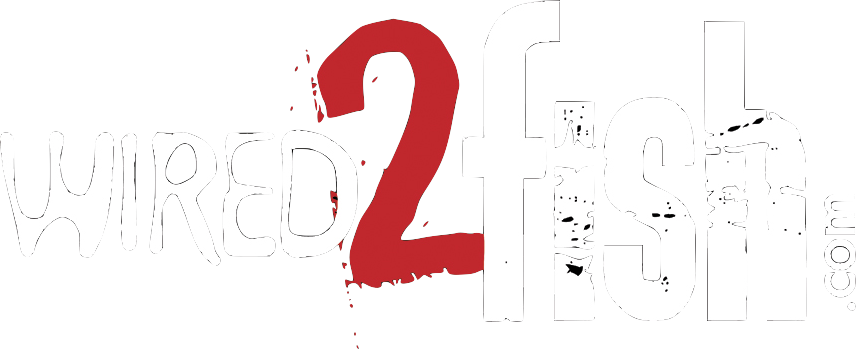A jig has been a prominent lure ever since the birth of bass fishing. This bait is responsible for catching giant bass all over the country. This bait can be used in a variety of scenarios, making it one of the most universal baits in your tackle box. However, with the rise in popularity surrounding forward facing sonar and jig and minnow style baits, the jig has become far less talked about.
This isn’t because the jig doest catch fish, it’s because the way people fish has changed. Forward facing sonar allows us to fish in entirely new ways by showing us the surrounding environment and how it reacts to our lure. Although far less talked about than other traditional forward facing sonar baits, the jig is an extremely effective lure to use in conjunction with this technology. This feature will cover where and how to fish a jig using forward facing sonar.
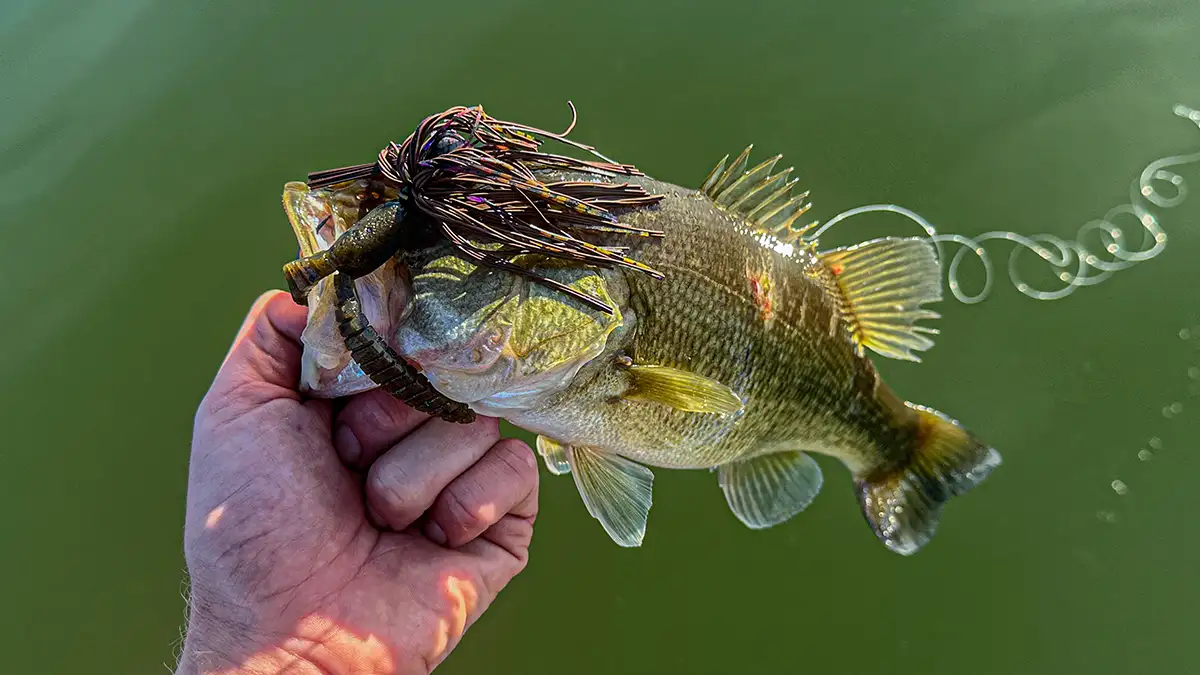
FISHING A JIG
Up until the creation of forward facing sonar, the art of fishing a jig has largely stayed the same. It has traditionally consisted of a long cast, letting it sink to the bottom, and dragging the bait back to the boat. While this is still an effective way to catch bass, forward facing sonar allows you to cast at specific fish and structures without any wasted time.
Throwing this lure at specific fish is one of the most effective ways to fish this bait. Regardless of the structure they’re on, using forward facing sonar to land the bait on their head is a very high percentage way to fish this bait. Traditionally you would make long casts with this bait, allowing it to stay in the trike zone for an extended period of time. Now you only throw this bait in areas where you can see fish, cutting down drastically on wasted time . While this may sounds simple, mastering the art of forward facing sonar can be quite difficult.
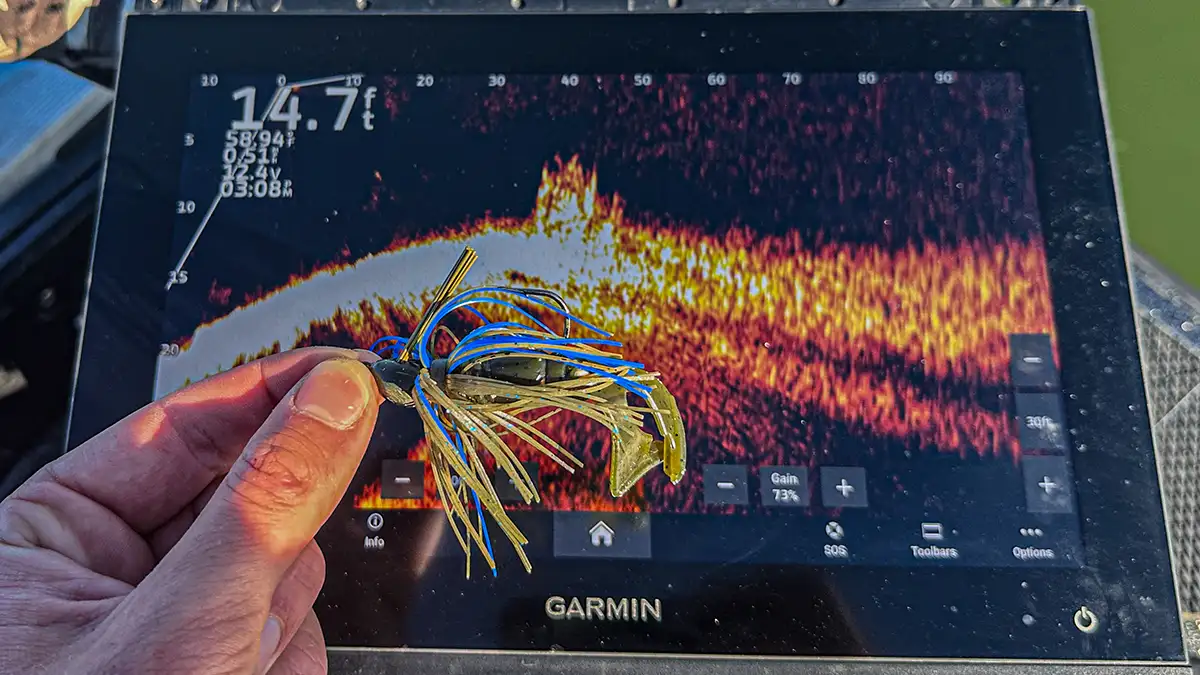
USING FFS TO YOUR ADVANTAGE
On paper it sounds like forward facing sonar makes bass jump in the boat, however that is simply not the case. There is a lot more to it than simply casting at every dot you see and catching a fish. First you must determine they are bass, make the proper cast and show them the correct presentation. One of the best ways to quickly locate areas to catch bass on forward facing sonar is by understand what bass look like compared to other species.
Bass often travel in groups, however they can be solo as well. These fish will often be moving on the screen if they are active and wanting to feed. If you cast at one and it doesn’t react to your bait, it is likely another species. Sonar return is another way too quickly differentiate between bass and other species. Most bass are roughly the same size, this allows you to quickly eliminate species such as carp, catfish or striper, which are all much bigger. Once you’re able to delineate bass from other species of fish, you can effectively fish varying types of cover with a jig.
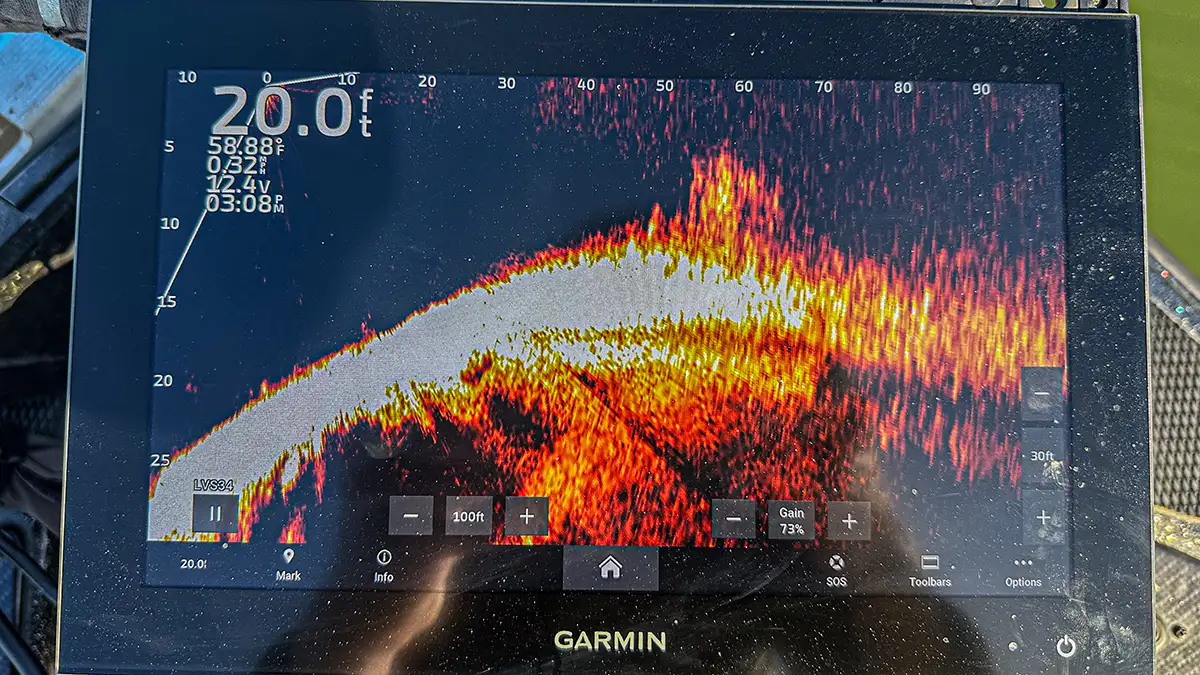
TARGETING BRUSH
One of the most effective patterns for fishing a jig is offshore brush. Traditionally anglers would find a brush pile, then make the same cast through the brush multiple times hoping for a bite. While this technique still works, forward facing sonar allows you to cast your jig at fish that are roaming around the brush. Casting your jig at individual fish is a far more effective and efficient strategy for quickly putting fish in the boat.
This allows you to cast at the fish, watch how it reacts, then quickly reel up and try again with another bass. One of the best ways to fish this bait is by casting at specific bass positioned around the brush. Allowing the bait to fall in front of their face and sit is a great way to get these bass to react. If the fish swims away from your bait, go ahead and reel up and try another fish. These fish will often be suspended, so allowing them to follow your jig to the bottom is a high percentage way to get bit. When fishing brush, I will often opt for a casting style jig with streamline profile. One of my go to jigs for brush fishing is the Strike King Danny Brauer Structure Jig with a 3-inch Keitech Flex Chunk.
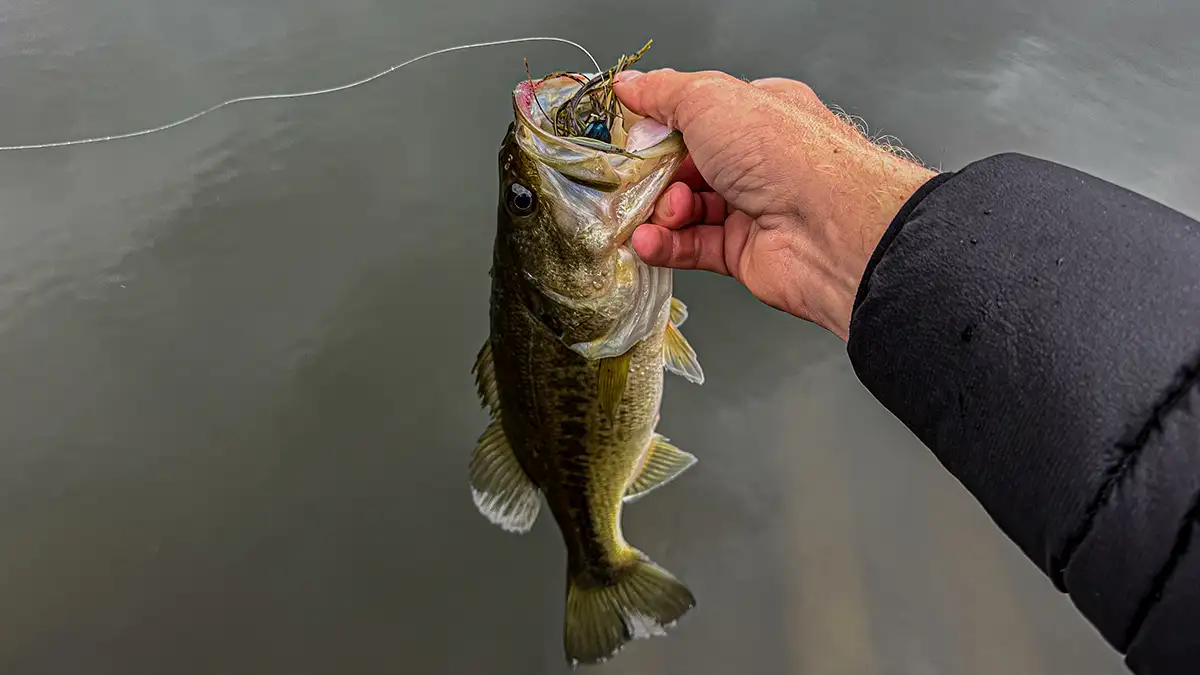
TARGETING HARD SPOTS
Another extremely effective location to fish a jig using forward facing sonar is on offshore hard spots. The locations are generally created by current, washing away sediment in certain locations creation a clean hard spot. Fish will position themselves tight to the bottom in these locations, waiting for bait to be pushed through by the current. Casting at fish glued to the bottom on these hard spots are high percentage places to get bit on a jig.
When fishing a jig in this scenario, I will typically cast my jig up river from the bass, allowing it to wash naturally with the current. Watching how fish react is curial for determining the correct cadence and presentation for your jig. I will typically make a longer cast in these scenarios, as its slightly harder to see bass positioned on the bottom using forward facing sonar. A telltale sign these fish want to eat is if they swim up off the bottom to meet your jig. My go to jig for fishing hard spots is the Dirty Jigs Tour Level Skirted Football Jig.
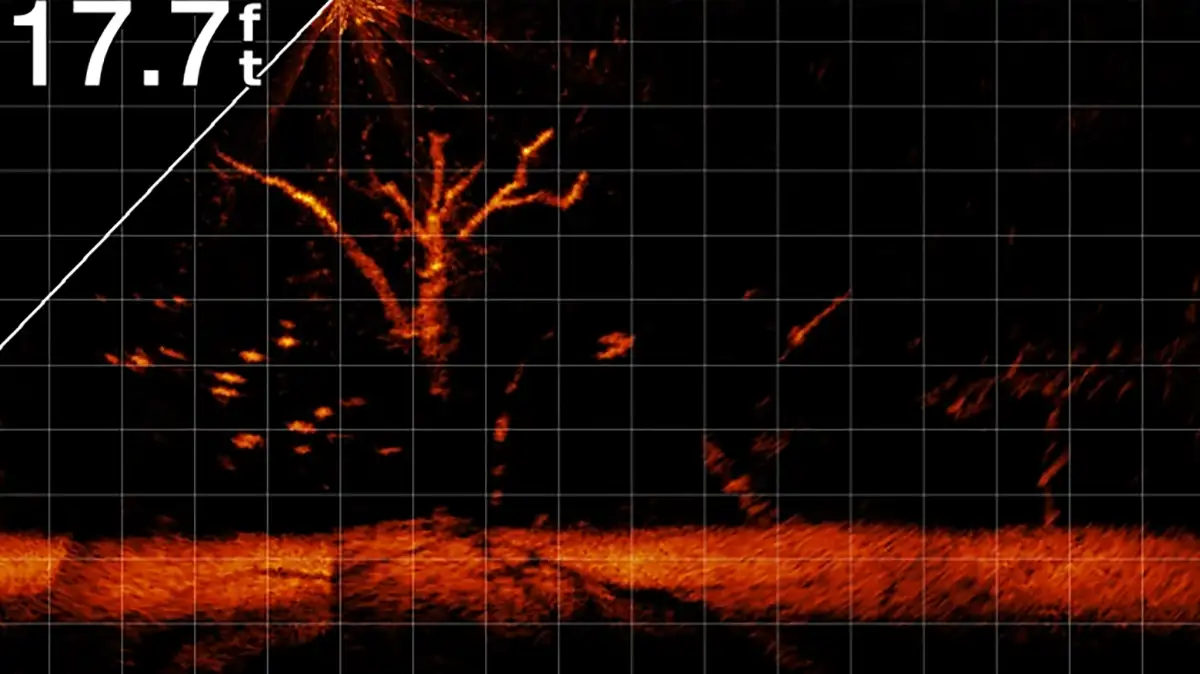
TARGETING SUSPENDED FISH
Lastly, targeting suspended fish with a jig is one of the least talked about methods of jig fishing. While it may sound weird, this is a very productive way to catch quality fish on numerous lakes across the country. Using forward facing sonar, cast your jig directly on top of the fish. Then watch how the fish reacts as it falls to the bottom. If they follow it all the way to the bottom, there’s a good chance he will eat it. If he swims away or doesn’t pay attention to the bait, quickly reel up and try another fish.
Furthermore, a jig can be productive at nearly any depth as long as it can reach the bottom. I’ve found most fish eat the second the bait hits the bottom. For this style of fishing, I typically throw a 3/4 to 1-ounce jig. This faster fall rate allows you to fish this bait at deeper depths as well as general quick reaction strikes. My go to jig for targeting suspended fish is the Greenfish Tackle Little Rubber Jig. This bait has a light enough hook to deliver consistent hook penetration, and a streamline profile to avoid snagging cover.
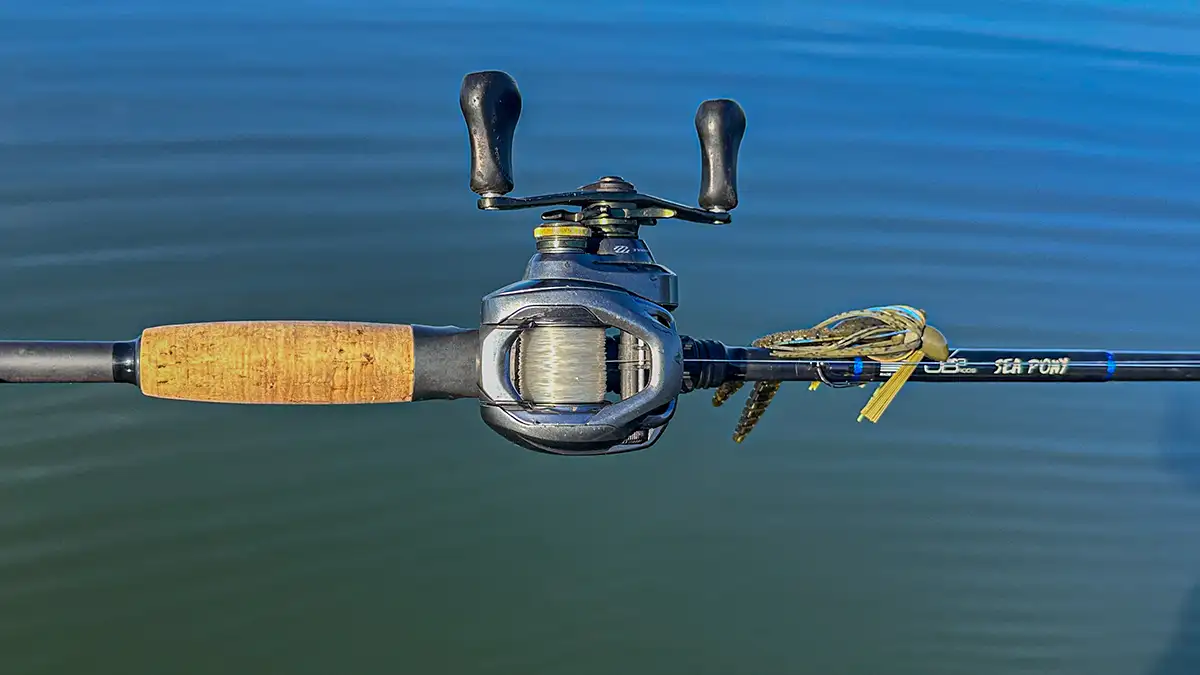
CHOOSING THE RIGHT SETUP
Having the right setup is crucial for landing fish on a jig. This bait’s stout hook and weed guard call for a heavy action rod with lots of leverage. A longer rod also allows for longer casts and more leverage on a hookset. This is crucial for getting good hook penetration on longer casts. One of my go to rods for throwing a jig offshore is the JB3 Sea Pony Casting Rod.
For a reel, one with a deep spool and high gear ratio is ideal for this scenario. The deep spool allows for lots of heavy gauge line. This leads to longer casts and a faster retrieval speed. The high gear ratio allows you to quickly pick up line when fighting fish to the boat. It also helps deliver a better hookset after being slack lined by a bass. One of my go to reels for fishing a jig offshore is the Shimano Curado 200 DC in the 8:1 gear ratio.
If you’re looking for new ways to fish a traditional bait, fishing a jig using forward facing sonar is a great way to do it. This is a fairy new style of fishing that is responsible for catching giant bass all over the country. This review explains where and how to fish a jig effectively using forward facing sonar.


